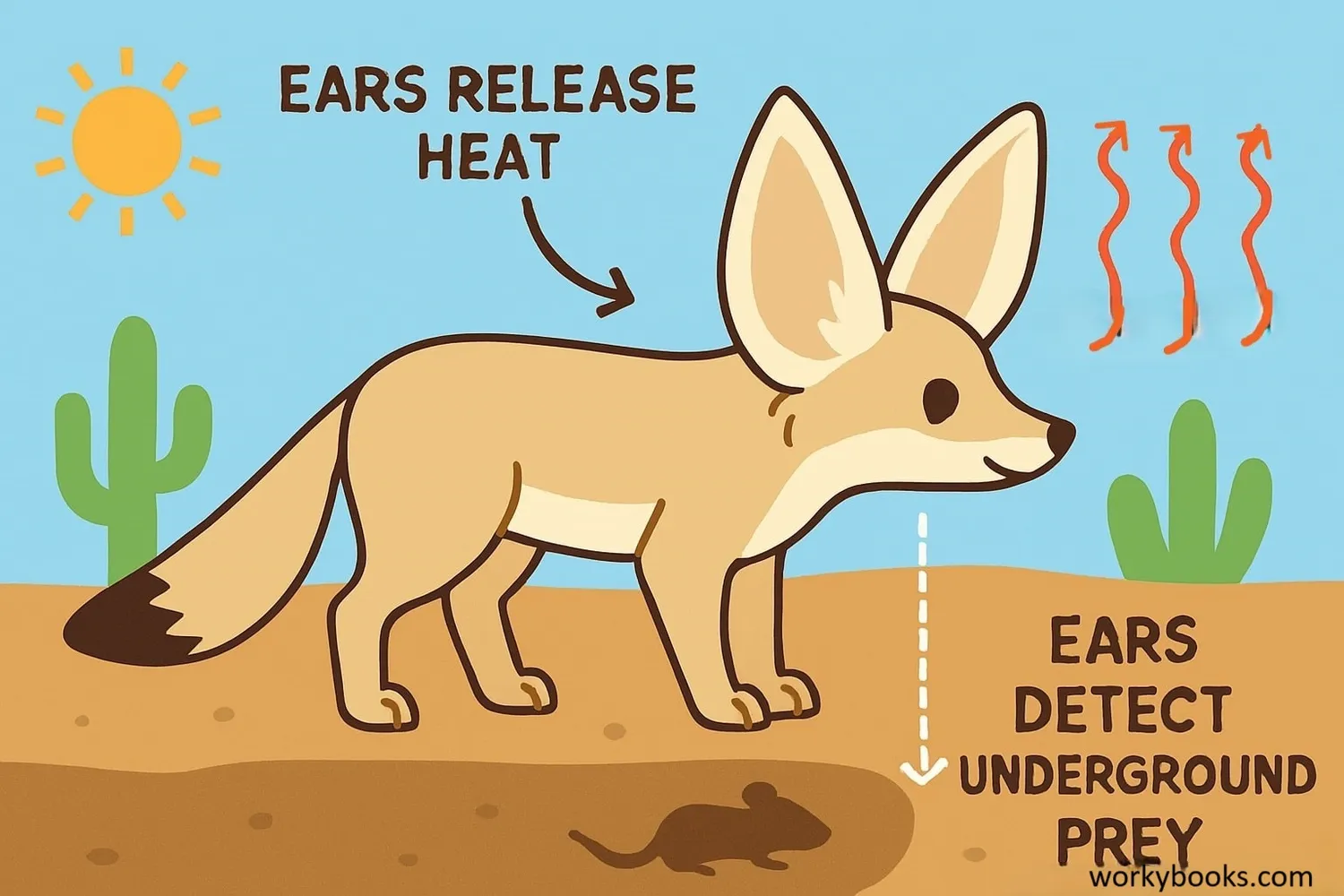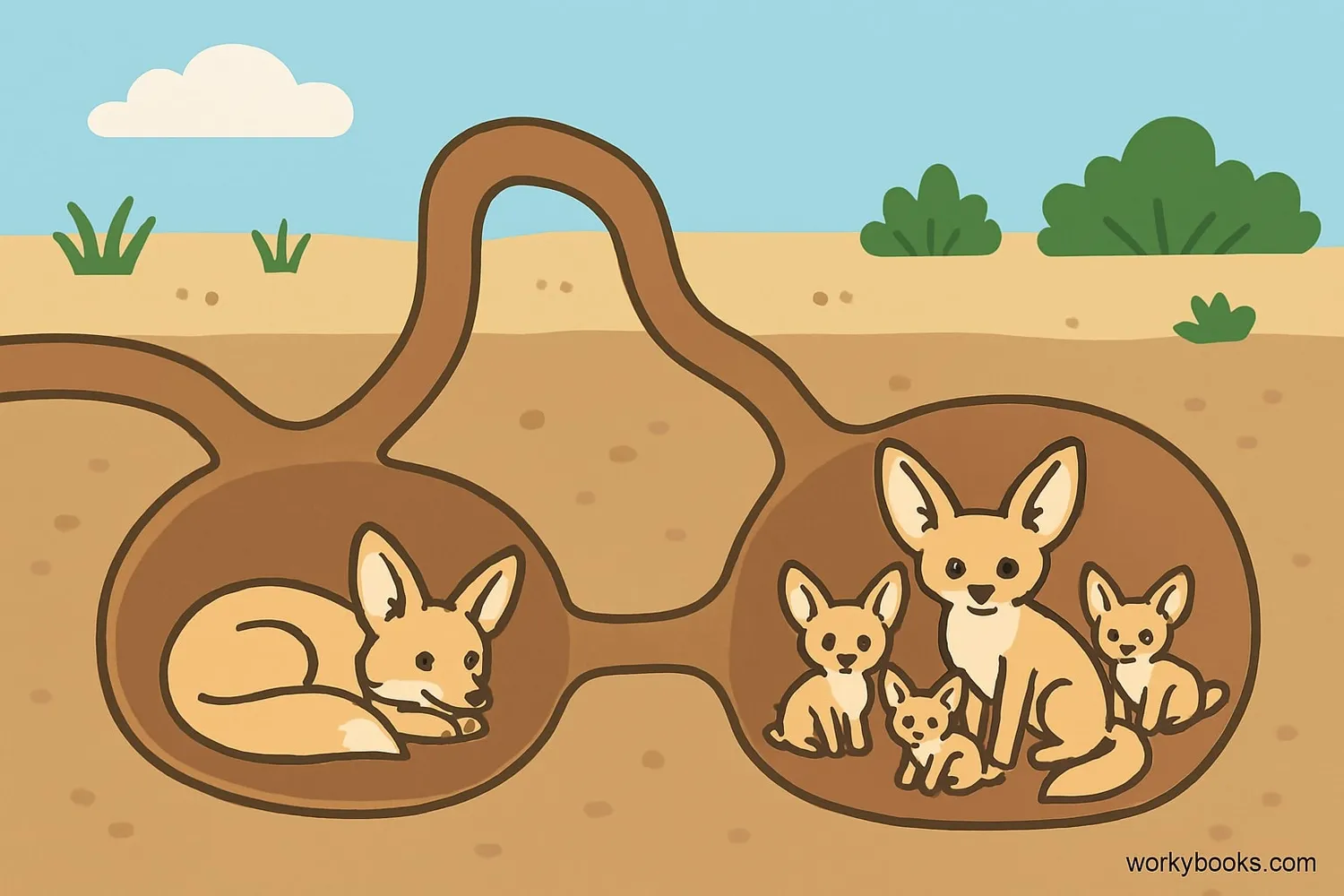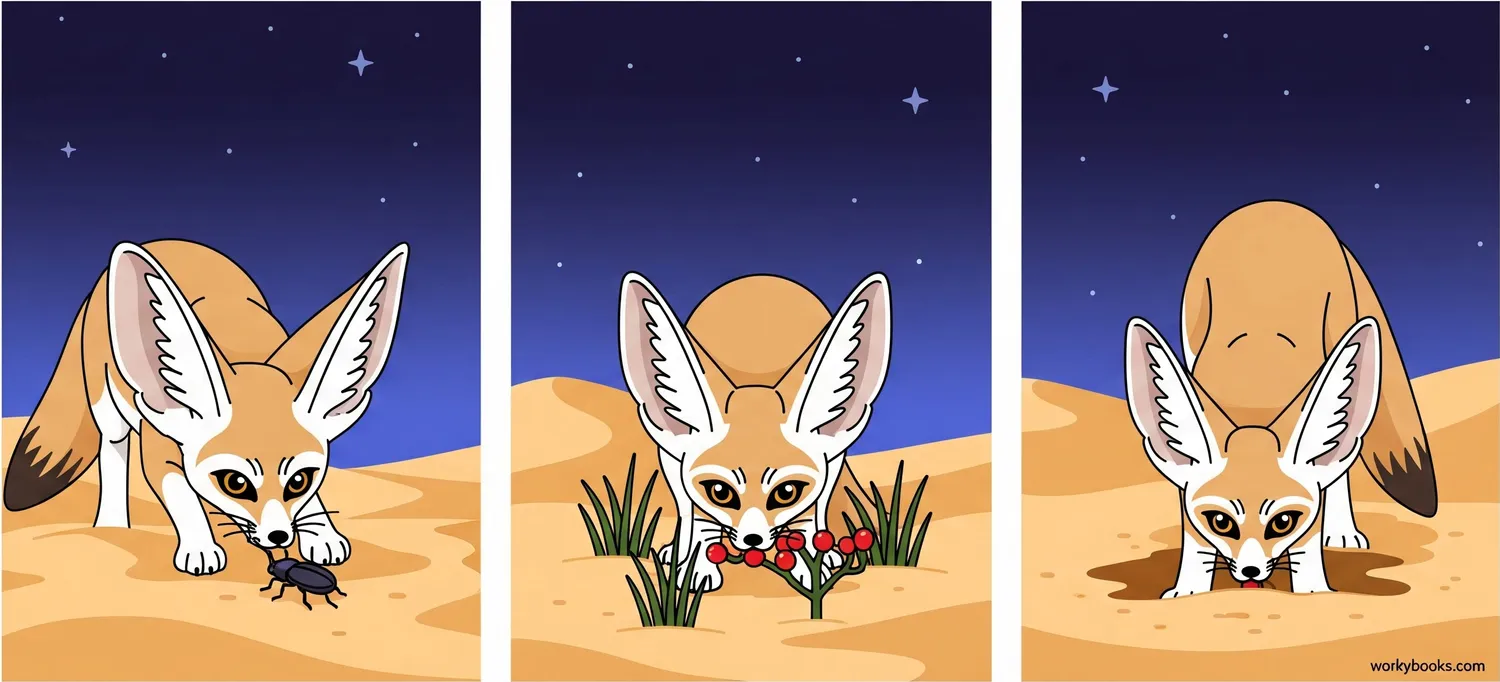Fennec Fox - Definition, Examples, Quiz, FAQ, Trivia
Discover the amazing desert fox with giant ears!
What is a Fennec Fox?

The fennec fox is the smallest species of fox in the world! These amazing creatures live in the Sahara Desert of North Africa. They're famous for their enormous ears, which can grow up to 6 inches long - that's about the length of a new pencil!
Fennec foxes are about the size of a small cat, weighing only 2-3 pounds when fully grown. They have thick, sandy-colored fur that helps them blend into the desert environment. Their scientific name is Vulpes zerda, which means "fox of the desert."
Size Fact!
A fennec fox is so small that it could fit inside a backpack! Their bodies are only 9-16 inches long, but their ears make them look much bigger.
Amazing Desert Adaptations

Fennec foxes have incredible adaptations that help them survive in the harsh desert environment:
Giant Ears
Help release body heat and hear insects underground
Thick Fur
Insulates against cold nights and reflects sunlight
Furry Feet
Protect paws from hot sand and help dig burrows
Water Conservation
Get most water from food, rarely drink water
Nocturnal
Active at night to avoid daytime heat
Their enormous ears aren't just for hearing - they act like radiators to release body heat! The blood vessels in their ears expand when they're hot, allowing heat to escape and cool their bodies. This is crucial for survival in the desert where temperatures can reach 122°F (50°C) during the day.
Super Hearing!
Fennec foxes can hear insects moving underground from several feet away. Their ears are so sensitive they can detect prey moving beneath the sand!
Desert Habitat and Home

Fennec foxes live in the Sahara Desert in North Africa, one of the hottest and driest places on Earth. They make their homes in burrows - complex tunnel systems dug into the sand.
These burrows can be up to 3 feet deep and 32 feet long, with multiple entrances and chambers. The burrows protect them from the extreme desert heat during the day and cold temperatures at night. Fennec foxes often dig their burrows under stable objects like rocks or plants to prevent collapse.
Burrow Design
Multiple entrances, sleeping chambers, and escape routes
Family Life
Live in small family groups of up to 10 foxes
Safety
Burrows protect from predators and extreme temperatures
Fennec foxes are social animals that live in small family groups. A typical family includes a mated pair and their young from the current year, and sometimes older offspring who haven't left to establish their own territory.
Diet and Behavior

Fennec foxes are omnivores, which means they eat both plants and animals. Their diet includes:
Insects
Grasshoppers, locusts, beetles, and termites
Plants
Berries, leaves, roots, and fruits
Other Foods
Small rodents, birds, eggs, and lizards
Fennec foxes are nocturnal, meaning they're most active at night. This helps them avoid the extreme desert heat. They have excellent night vision and hearing to help them find food in the dark.
An amazing adaptation is their ability to get most of their water from the food they eat. They can survive for long periods without drinking water directly, which is crucial in the desert where water is scarce.
Communication
Fennec foxes use a variety of sounds to communicate, including barks, purrs, and squeaks. They have different vocalizations for danger, play, and mating.
Fennec Fox Quiz
Test your knowledge about fennec foxes with this fun quiz! Answer all 5 questions to see how much you've learned.
Frequently Asked Questions
Here are answers to some common questions about fennec foxes:
Fun Fennec Fox Trivia
Discover some amazing facts about these desert foxes!
Speedy Diggers
Fennec foxes can dig incredibly fast! They can disappear underground in seconds when threatened, using their specially adapted paws to move sand quickly.
Talkative Foxes
Fennec foxes are very vocal animals. They make a variety of sounds including barks, purrs, squeaks, and growls to communicate with each other.
National Symbol
The fennec fox is Algeria's national animal and even appears on their ¼ dinar coin! They're considered symbols of resourcefulness in desert cultures.
Heat Tolerance
Fennec foxes can withstand temperatures up to 104°F (40°C) without needing to pant to cool down! Their ears and burrows help regulate their body temperature.


